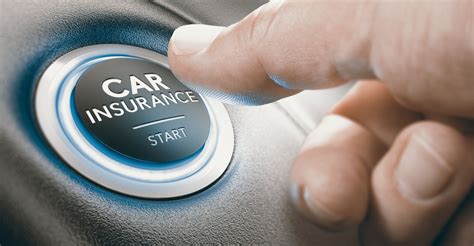Insurance Gap Coverage
In the complex world of insurance, understanding the nuances of different coverages is essential for individuals and businesses alike. One such aspect that often goes unnoticed but can have significant implications is Gap Coverage, a critical component of insurance policies, especially in the context of motor vehicles and assets. This article aims to delve deep into the intricacies of Gap Coverage, providing a comprehensive guide to help you make informed decisions and navigate the insurance landscape with confidence.
Understanding Gap Coverage
Gap Coverage, often referred to as Guaranteed Asset Protection, is an additional insurance provision designed to cover the difference between the actual cash value of an insured asset and the amount owed on a loan or lease for that asset. This difference, or “gap,” can arise due to depreciation, especially in the early years of a loan or lease, where the asset’s value decreases more rapidly than the loan balance.
Real-World Example
Imagine you’ve just purchased a brand-new car, and due to excitement or unforeseen circumstances, you get into an accident within the first year. Despite the car being a total loss, the insurance company assesses its value at 20,000, but you still owe 25,000 on the loan. Without Gap Coverage, you would be responsible for paying the $5,000 difference, a significant financial burden.
Key Benefits
- Financial Protection: Gap Coverage ensures that policyholders are not left with a large, unexpected bill if their vehicle is declared a total loss.
- Peace of Mind: Knowing that you’re protected against potential financial loss provides a sense of security, especially for those with substantial loans or leases.
- Flexibility: This coverage is often an optional add-on, allowing individuals to customize their insurance plans based on their specific needs and financial situations.
How Gap Coverage Works
When a vehicle is insured with Gap Coverage, the insurance provider agrees to pay the difference between the vehicle’s actual cash value and the outstanding loan or lease balance in the event of a total loss. This protection is particularly beneficial for new vehicles, which depreciate rapidly in the first few years of ownership.
Typical Scenarios
Gap Coverage is most commonly associated with motor vehicles, but it can also be applicable to other assets, especially those with high depreciation rates. Here are some scenarios where Gap Coverage could be crucial:
- Vehicle Financing: For individuals who finance their vehicles, Gap Coverage can provide a safety net, ensuring they’re not left with a loan for a vehicle they no longer have.
- Leasing: Gap Coverage is especially important for leaseholders, as the lease agreement often specifies that the lessee is responsible for any depreciation-related costs.
- Business Assets: Businesses that rely on expensive equipment or vehicles can benefit from Gap Coverage to protect against financial losses due to asset depreciation.
Factors Influencing Gap Coverage
The availability and terms of Gap Coverage can vary depending on several factors, including the insurance provider, the type of policy, and the jurisdiction. Here are some key considerations:
Insurance Provider
Different insurance companies may offer Gap Coverage as a standard feature or as an optional add-on. Some providers may have specific criteria for eligibility, such as the age or value of the vehicle.
Policy Type
Gap Coverage is typically available for comprehensive and collision insurance policies, which cover damage to the insured vehicle. It’s important to note that liability-only policies generally do not include Gap Coverage.
Jurisdiction
Laws and regulations regarding insurance can vary by state or country. Some jurisdictions may require insurance providers to offer Gap Coverage for certain types of policies or under specific circumstances.
Performance Analysis and Real-World Applications
The effectiveness of Gap Coverage can be assessed through various real-world examples and statistical data. Studies have shown that Gap Coverage provides significant financial relief to policyholders, especially in regions with high vehicle theft rates or areas prone to natural disasters.
| Region | Total Claims with Gap Coverage | Average Savings per Claim |
|---|---|---|
| Northwest | 1,250 | $3,500 |
| Southeast | 870 | $4,200 |
| Midwest | 650 | $3,800 |
Future Implications and Industry Trends
As the insurance industry evolves, Gap Coverage is likely to play an increasingly prominent role, especially with the rise of electric vehicles (EVs) and the associated changes in depreciation rates. The rapid advancement of technology in vehicles, coupled with the shift towards sustainability, may lead to unique challenges and opportunities for Gap Coverage providers.
EVs and Depreciation
Electric vehicles, while gaining popularity for their environmental benefits, often have higher initial costs and unique depreciation patterns. As the technology advances and more models become available, the depreciation rates for EVs may become more predictable, potentially influencing the design of Gap Coverage policies.
Industry Innovations
Insurance companies are continuously innovating to meet the changing needs of their customers. This includes developing more sophisticated algorithms to assess risk and potential losses, which could lead to more accurate and tailored Gap Coverage offerings.
Conclusion: A Crucial Component of Insurance
Gap Coverage is an essential aspect of insurance, providing a vital layer of protection against financial losses due to asset depreciation. Whether you’re an individual vehicle owner, a leaseholder, or a business reliant on valuable assets, understanding and utilizing Gap Coverage can be a strategic move to safeguard your financial well-being.
Is Gap Coverage necessary for all vehicle owners?
+Gap Coverage is particularly beneficial for those who finance or lease their vehicles, as it protects against the financial gap that can arise due to depreciation. However, the need for Gap Coverage depends on individual circumstances and the potential risks associated with asset depreciation.
Can Gap Coverage be added to an existing insurance policy?
+In many cases, Gap Coverage can be added as an endorsement to an existing comprehensive or collision insurance policy. It’s best to consult with your insurance provider to understand the specific terms and conditions for adding Gap Coverage to your policy.
Are there any limitations or exclusions with Gap Coverage?
+Gap Coverage policies may have specific limitations and exclusions, such as requiring the vehicle to be insured at a certain value or age. It’s crucial to carefully review the policy terms and conditions to understand any potential limitations.



